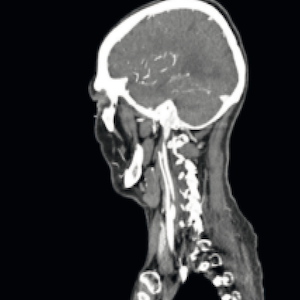Importance of assessment of carotid plaques in the managementof acute ischemic stroke: floating intracarotid plaque

Published: September 6 2023
Abstract Views: 565
PDF: 156
Publisher's note
All claims expressed in this article are solely those of the authors and do not necessarily represent those of their affiliated organizations, or those of the publisher, the editors and the reviewers. Any product that may be evaluated in this article or claim that may be made by its manufacturer is not guaranteed or endorsed by the publisher.
All claims expressed in this article are solely those of the authors and do not necessarily represent those of their affiliated organizations, or those of the publisher, the editors and the reviewers. Any product that may be evaluated in this article or claim that may be made by its manufacturer is not guaranteed or endorsed by the publisher.
Similar Articles
- Ottavia Borghese, Claudio Vincenzoni, Commentary on “Preventive percutaneous coronary intervention versus optimal medical therapy alone for the treatment of vulnerable atherosclerotic coronary plaques (PREVENT): a multicenter, open-label, randomized controlled trial” , Bleeding, Thrombosis and Vascular Biology: Vol. 3 No. 2 (2024)
- Alessandro Pezzini, The balance between hemorrhage and thrombosis in patients surviving spontaneous intracerebral bleeding: the nightmare of a neurologist , Bleeding, Thrombosis and Vascular Biology: Vol. 3 No. 2 (2024)
- Gualtiero Palareti, The diagnostic procedure for subjects with suspected pulmonary embolism. A recent comparison among the recommendations available from the international guidelines , Bleeding, Thrombosis and Vascular Biology: Vol. 3 No. 1 (2024)
- Ronda Lun, Deborah M. Siegal, Cancer-associated ischemic stroke: current knowledge and future directions , Bleeding, Thrombosis and Vascular Biology: Vol. 3 No. s1 (2024): 12th ICTHIC
- Francesco Cicconi, Ankle brachial index for the diagnosis of asymptomatic lower extremity peripheral arterial disease , Bleeding, Thrombosis and Vascular Biology: Vol. 3 No. 2 (2024)
- Vittorio Pengo, Comment on "Apixaban vs. aspirin for stroke prevention in people with subclinical atrial fibrillation and a history of stroke or transient ischemic attack: subgroup analysis of the ARTESiA randomized controlled trial" , Bleeding, Thrombosis and Vascular Biology: Vol. 4 No. 2 (2025)
- Ettore Dolcetti, Antonio Bruno, Diego Centonze, Is transient ischemic attack a minor stroke? , Bleeding, Thrombosis and Vascular Biology: Vol. 1 No. 1 (2022)
- Gualtiero Palareti, Management of atrial fibrillation: a practical and useful synopsis of last guidelines , Bleeding, Thrombosis and Vascular Biology: Vol. 4 No. 1 (2025)
- Daniela Poli, Emilia Antonucci, Gualtiero Palareti, Roberto Facchinetti, Pietro Falco, Giuseppina Serricchio, Teresa Lerede, Lucilla Masciocco, Paolo Gresele, Sophie Testa, Major bleedings in mechanical prosthetic heart valves patients on Vitamin K antagonist treatment. Data from the PLECTRUM Study , Bleeding, Thrombosis and Vascular Biology: Vol. 1 No. 2 (2022)
- Daniela Poli, Walter Ageno, Emilia Antonucci, Salvatore Bradamante, Eugenio Bucherini, Paolo Chiarugi, Antonio Chistolini, Benilde Cosmi, Anna Falanga, Antonio Insana, Domenico Lione, Rosa Maria Lombardi, Giuseppe Malcangi, Rossella Marcucci, Giuliana Martini, Lucilla Masciocco, Carmelo Paparo, Daniele Pastori, Simona Pedrini, Vittorio Pengo, Pasquale Pignatelli, Andrea Toma, Sophie Testa, Gualtiero Palareti, Management of anticoagulation in atrial fibrillation patients in Italy: insight from the Atrial Fibrillation-Survey on Anticoagulated Patients Register (AF-START) , Bleeding, Thrombosis and Vascular Biology: Vol. 2 No. 2 (2023)
1-10 of 39
Next
You may also start an advanced similarity search for this article.











